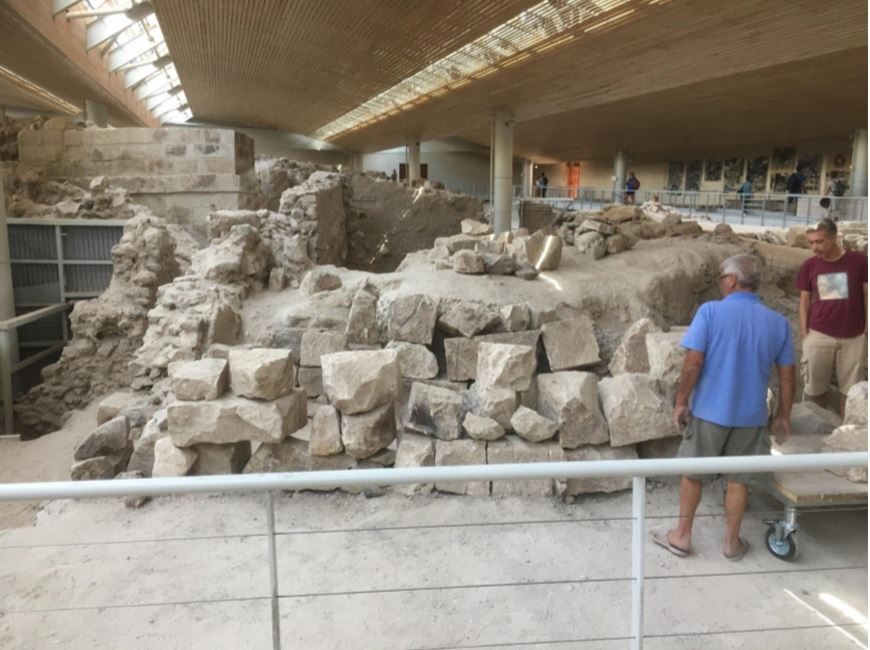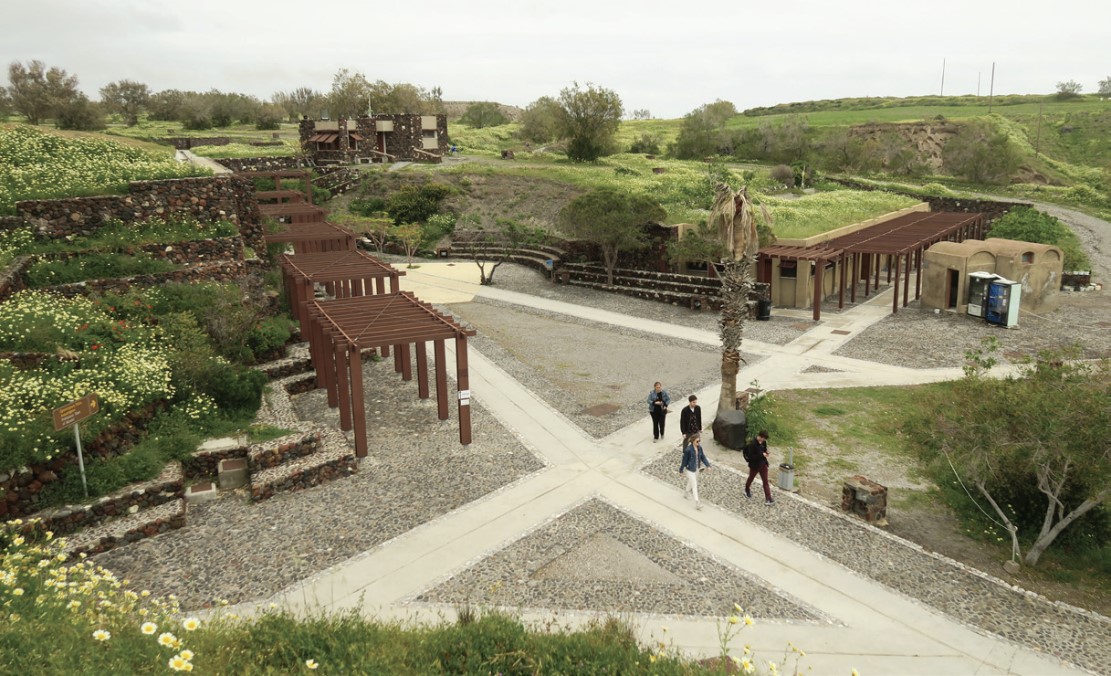February 28, 2020
Amazing ancient artifacts of Santorini.
It’s been a while since we’ve had any excavation news from the Minoan Bronze Age settlement of Akrotiri. But that doesn’t mean the archaeologists there aren’t still working away diligently. In fact, today I’ll show you how they’ve been continuing to expand our understanding of the ancient world.
You might be asking yourself: why Akrotiri, and not some other ancient city? Here’s a synopsis if you’ve missed my past posts.
In the Aegean Sea, the island of Santorini is probably best known for its Insta-friendly white houses, blue roofs, and breathtaking sunsets. But what a lot of people don’t know is that the island was once the site of one of mankind’s most significant natural disasters. Around 3,600 years ago, the Theran eruption destroyed a flourishing ancient culture. When excavations began here in the mid-20th century, archaeologists discovered an amazingly well-preserved city buried in volcanic ash, including two and three-story buildings. The settlement was incredibly advanced for the time, boasting structures with built-in sewage and water supply lines (I repeat: three thousand six hundred years ago!). Researchers have unearthed frescoes, pottery, furniture and numerous other artifacts attesting to the unbelievable cultural advancement of this ancient seaside society.
But when archaeology budgets were cut in Greece, excavations stopped due to lack of funding. Here and there some minor digging continued, but overall the project went into conversation mode. That’s where my obsession with the excavation begins, in 2006, when I first got acquainted with the settlement’s history. And when I put my mind to making the world a better place in some specific way, I get it done (or in this case, started!). So in 2016, lo and behold, excavations were resumed, after more than a decade, with our financial support! That’s how I ended up getting a chance to do a little digging myself, and dig I did! I even discovered a Cycladic statuette dated ~5,000 years old. Now every year we learn more and more about how the island’s ancient inhabitants lived.
So what were the highlights of 2019? There’s lots of fascinating progress to share in different areas:
I. Lots of new frescoes were restored, some reaching 2.15 meters tall! (I’ve already written here about how intensely detailed this restoration work is.) The pictures below show frescoes and sketches from Xeste 3 and Xeste 4.
II. Building conservation fieldwork. In other words, excavated structures need to be restored, reinforced (what if there’s another earthquake?), and protected against other factors. The work that needs to be done is staggering. This season, around 900 large fragments of building materials from around the site were documented and transported to a specially constructed facility.

III. Akrotiri is more than just a research site, it’s a popular tourist attraction that hosts tens of thousands of wide-eyed tourists and their shuttering cameras every year. A new guide book was published in the most common tourist languages.
QUESTION: can you guess what the languages are?
To make the site even more interesting and accessible, there are also plans to install new info panels, signs, and other useful screens. The first of them should be ready to go by the start of the upcoming tourist season. Some of the other big projects include 3D movies about Akrotiri buildings and a smartphone app. May the history of Akrotiri live on in the digital world!

IV. Excavations continue at the ‘House of the Benches’. Talk about a mystery building! At first there weren’t any signs that people lived or worked here — no household items, frescoes, nothing! Or rather, nothing except benches on either side of an 80 cm narrow middle passage. But now things are starting to take shape! Last year, archaeologists unearthed a stash of various artifacts in an adjoining room, including bronze weapons, faience beads, faience imitation wash-basins, and a quartz pendant. They even came across a faience Triton’s trumpet with an inscription in Linear A! But what it says is still a mystery, as no texts in Linear A have ever been deciphered.
V. In another adjoining room they also found an… ancient cafeteria? Or maybe the remains of some long-forgotten ritual? Whatever it is, a total of 147 ceramic cups were discovered. What they were doing there is a mystery. One theory suggests that they probably weren’t for everyday use because they were too fragile. Based on their number and location among other artifacts, it might be supposed that the vessels were intended to be used just once as part of a religious ritual.
Other nearby items help clear up the confusion, such as a big pile of antlers, stone tools, vases and fabric scraps. The current hypothesis is that this area was used as an altar for offerings, sacrifices, etc. Ceramic boxes were also discovered where ancient inhabitants hid a Cycladic statuette (a ‘sister’ to my discovery) and an ornate jar.
VI. Beyond excavations and frescos, there’s also a lot of other useful and essential work being done. For example, the restoration of unearthed ceramic vessels, vases and other pottery. More than 64 separate items were restored last year.
VII. There are big plans for the upcoming years as well, most notably the excavation of another building, Complex Beta, where two unique frescoes have already been discovered: ‘Boxing Boys’ and ‘Antelopes’ (currently on display at the National Archaeological Museum, Athens).
All in all, I’m itching to get back to Santorini to check out everything in person. And what better time than the five-year anniversary of our partnership! I still can’t get over the excitement of discovering that Cycladic statuette. I want more! Maybe I’ll get lucky again? :)
P.S. This is not a paid post. The Ministry of Tourism of Greece had nothing to do with it. But if you happen to be looking for an unforgettable summer vacation, you can’t go wrong with the beauty of Crete and Santorini. Or the Mediterranean’s fascinating ancient history!






















